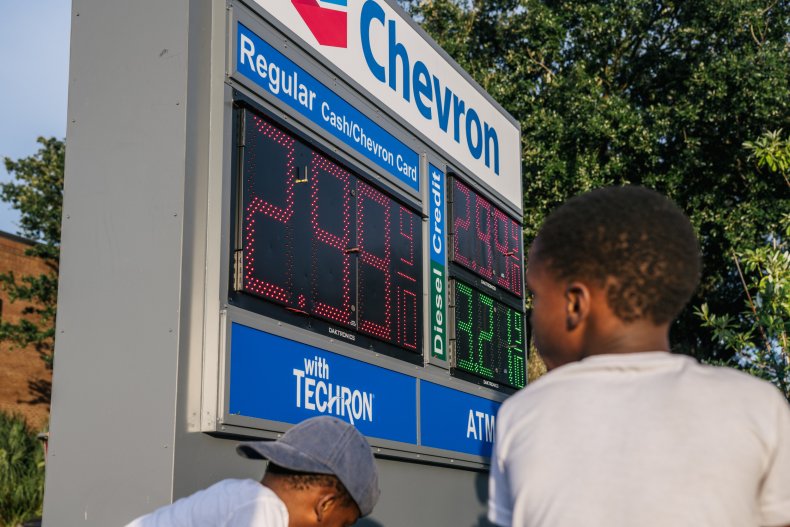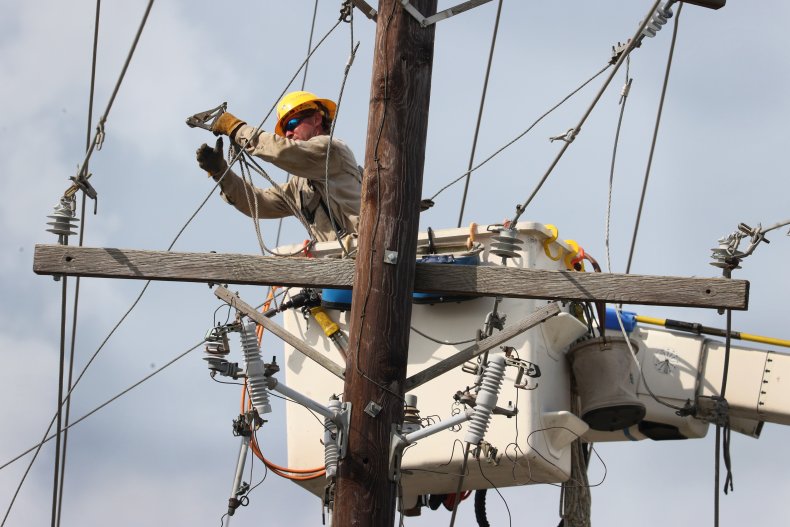When Does Gas Station Open Again After Hurricane
Ten days after Hurricane Ida made landfall in the U.S. and swept through New Orleans, about 56 percent of gas stations in the city had no gasoline, according to the website GasBuddy.com. Nearly half, or 48 percent, of all the gas stations in Baton Rouge were also dry Wednesday.
Louisiana Governor John Bel Edwards said during a press conference last week that two-thirds of the state's oil refineries, eight total, had stopped producing gas in the aftermath of the hurricane. He asked residents for patience until production could reach levels from before the hurricane.
"There will be stations without gas, and there will be people who will have to wait for some period of time in a line to get gas," he said.
The gas shortages are in addition to widespread power and water outages workers are still trying to rectify. While New Orleans has gotten closer to fully restoring power, hundreds of thousands of people outside the city limits remained without power or water.
For more reporting from the Associated Press, see below.

New Orleans was left completely in the dark when Hurricane Ida slammed into the Louisiana coast with 150 mph winds on August 29, cutting power to more than a million people statewide. Two days later, New Orleans Police and Mayor LaToya Cantrell imposed an 8 p.m. to 6 a.m. curfew, citing cases of theft and other minor crimes. They withdrew the order Wednesday morning but the police department said in a statement that it would maintain "increased and focused patrols throughout the city."
Meanwhile, 250,000 students remained out of the classroom, according to state Superintendent of Education Cade Brumley. Prior to Ida, schools around Louisiana had been open despite widespread cases of COVID-19, although under a statewide mask mandate for all indoor locations.
"We need to get those kids back with us as soon as we possibly can," Brumley said.
In New Orleans, School Superintendent Henderson Lewis Jr. said damage to schools appeared to be mostly minimal, but that power needs to be restored to all buildings, and teachers, staff and families need to return to the city.
"Now more than ever, our children stand to benefit from the comfort that structured and routine daily schooling can bring," Lewis said in a statement Wednesday. "So, let's all come together to reopen our schools quickly and safely."
Lewis said he expects classes for some will resume as early as next week and that all students will be back a week after that.
No school reopening estimates have been provided for the five parishes that were hardest hit by Hurricane Ida and which are home to about 320,000 people: Terrebonne, Lafourche, St. James, St. Charles and St. John the Baptist. Ten days after the hurricane, 96 percent of utility customers in those parishes are still without power.
In the Terrebonne Parish city of Houma, bucket trucks with linemen were on every street and as the day progressed there were signs of progress – street lights began working on busy Grand Caillou road by early afternoon.
Even as power was coming on in parts of Terrebonne Parish, it was of limited use to Coy Verdin. The 52-year-old fisherman was staying at his son's house in Houma. His own bayou-side home was all but destroyed in the storm.
"All the ceilings fell. You can see daylight through the roof," Verdin said. "All we have is basically a shell."
Ida scattered most of his 200 crab traps to parts unknown. "The only thing I have left is my boat and some of my commercial fishing rigging," he said.
The St. John the Baptist Parish School System website states that all schools and offices will be closed "until further notification" as officials inspect the buildings. Lafourche Parish Schools Superintendent Jarod Martin indicated a "long and extensive road to recovery" on that school system's website, with no timeline for a return in sight.
Statewide, crews have now restored power to 600,000 of the 902,000 who lost electricity at the peak of Hurricane Ida, Entergy Louisiana President and CEO Phillip May said on a Wednesday conference call with reporters.
Meanwhile, in New Orleans, the power company expected to have 90 percent of the city back online by Wednesday evening, said Entergy New Orleans President and CEO Deanna Rodriguez.
"The greater New Orleans area is coming back to life," Rodriguez said.
May cautioned that some people who get power back on could still lose it at some point in the coming days. That's because the tree canopy was left severely damaged by Ida, and damaged limbs and branches still in trees could be shaken loose and fall.
In many neighborhoods, homes remain uninhabitable. About 3,200 people are in mass shelters around Louisiana while another 25,000 people whose houses have been damaged are staying in hotel rooms through the Federal Emergency Management Agency's transitional sheltering program.
Ida's death toll in Louisiana rose to 15 people Tuesday after the state Department of Health reported two additional storm-related fatalities: a 68-year-old man who fell off of a roof while making repairs to damage caused by Hurricane Ida and a 71-year-old man who died of a lack of oxygen during an extended power outage. The storm's remnants also brought historic flooding, record rains and tornados from Virginia to Massachusetts, killing at least 50 more people.

stephensonreptit88.blogspot.com
Source: https://www.newsweek.com/56-percent-new-orleans-gas-stations-without-gas-after-hurricane-ida-1627260
0 Response to "When Does Gas Station Open Again After Hurricane"
Post a Comment